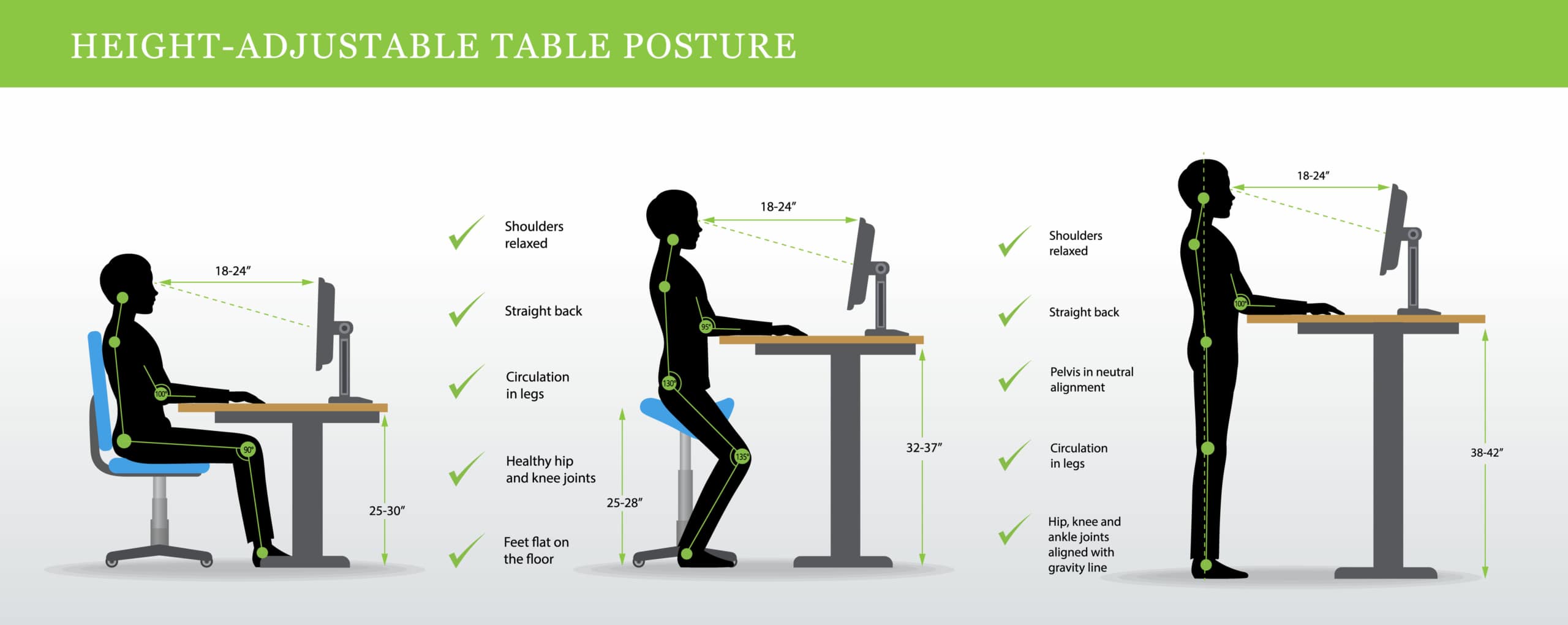Height-Adjustable Standing Desks
Standing Desks Have Become a Popular Office Workstation Option Due to Their Many Advantages Over Sitting-Only Desks
You’re probably well aware that sitting behind a desk all day at work is not ideal for your body. A standing or height-adjustable desk is an excellent solution for the modern office workstation. Spend some time standing and some time sitting to enjoy the benefits, and avoid the pitfalls, of each position. Explore our wide selection of sit-and-stand desk products to find the one that best suits your needs. To learn more about standing desks, view our standing desk guide below.

- Sale!
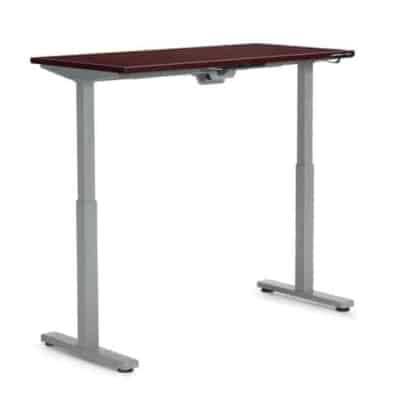
Global OTG Height Adjustable Table 48W
Original price was: $ 992.00.$ 479.00Current price is: $ 479.00. - Sale!
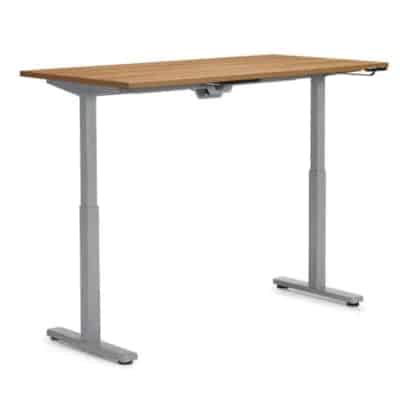
Global OTG Height Adjustable Desk 30D
Original price was: $ 1,017.00.$ 489.00Current price is: $ 489.00. - Sale!
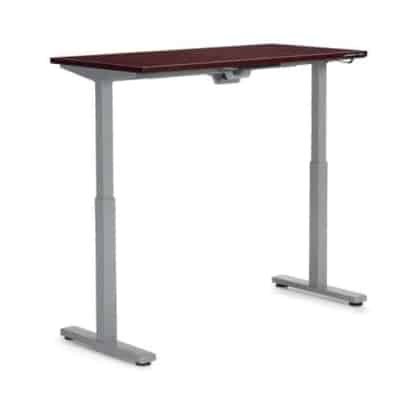
Global OTG Height Adjustable Table 60W
Original price was: $ 1,017.00.$ 489.00Current price is: $ 489.00. - Sale!
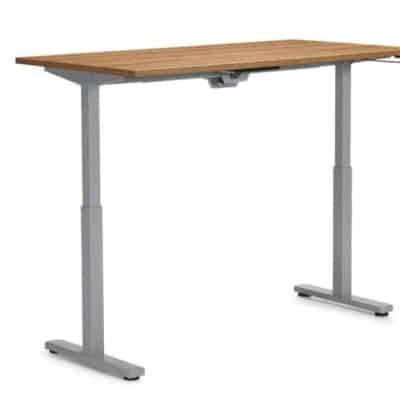
Global OTG Height Adjustable Desk 72W
Original price was: $ 1,045.00.$ 515.00Current price is: $ 515.00. - Sale!
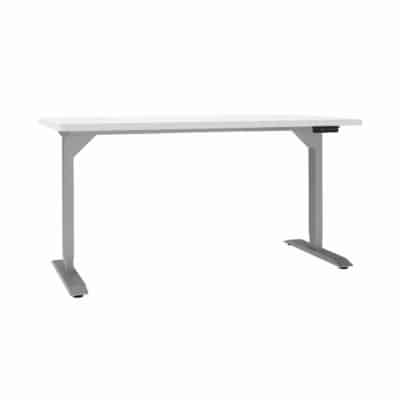
Height Adjustable 2-Stage Desk #379
Original price was: $ 1,742.00.$ 649.00Current price is: $ 649.00. - Sale!

Height Adjustable 3-Stage Desk #386
Original price was: $ 1,967.00.$ 711.00Current price is: $ 711.00. - Sale!
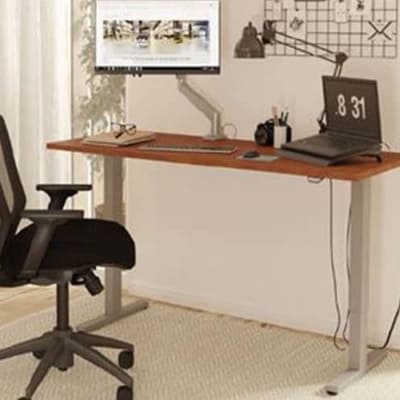
Home Office Height Adjustable Desk 24×60 #613
Original price was: $ 1,503.00.$ 809.00Current price is: $ 809.00. - Sale!
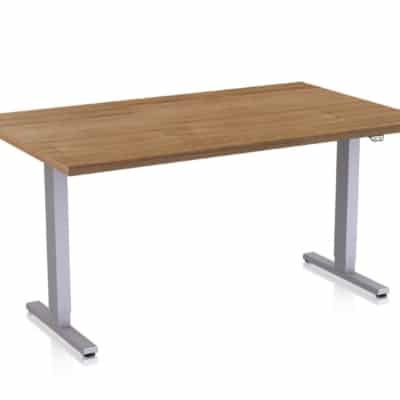
Liberty Height Adjustable Table #372
Original price was: $ 1,575.00.$ 889.00Current price is: $ 889.00. -
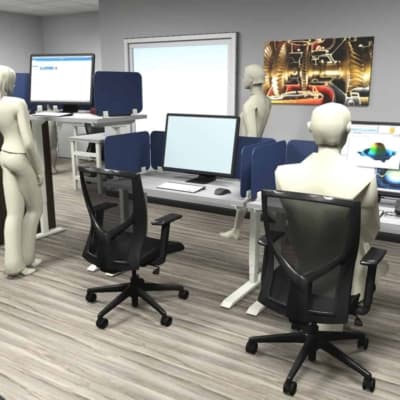
Height Adjustable Desk with Screens #109
$ 1,205.00 -
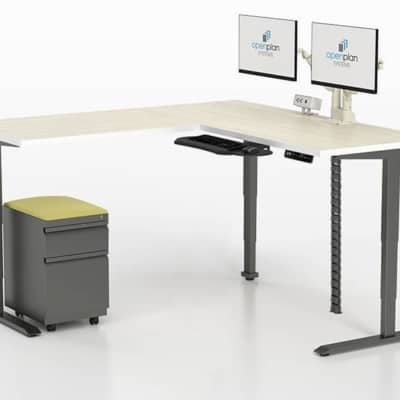
Height Adjustable L-Shaped Table Desk #356
$ 1,296.00 -
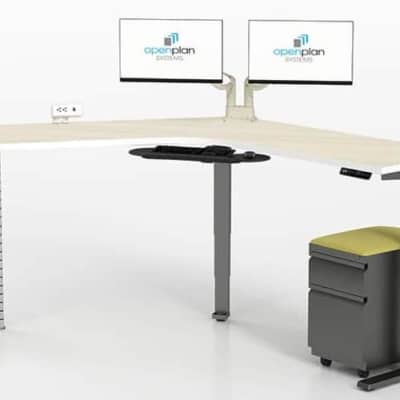
Height Adjustable Curved Table Desk #369
$ 1,355.00 -
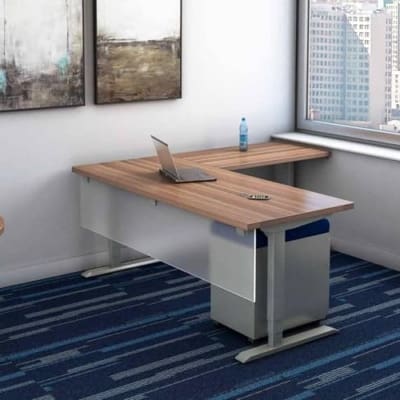
Height Adjustable L-shaped Desk #304
$ 1,879.00 -
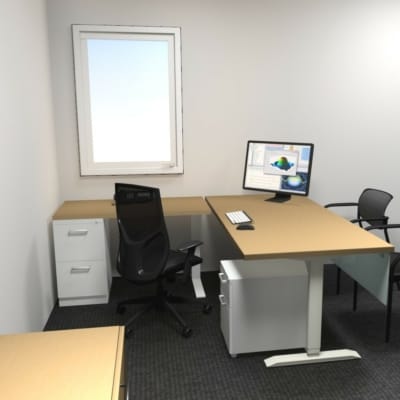
L-shaped Height Adjustable Desk #756
$ 2,119.00 -
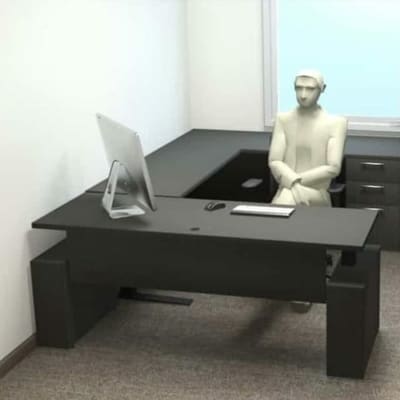
Executive Height Adjustable Desk #709
$ 3,715.00 -
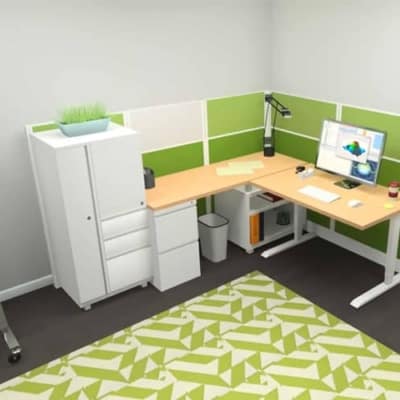
Height Adjustable Workstation with Storage Tower #168
$ 4,391.00
Standing Desk Office Furniture Guide
Modern-day Americans spend as much as 90% of the day sitting. Combined, too much sitting and too little movement can result in weight gain, reduced metabolic rate, backaches, and joint and muscle tension. Height-adjustable desks have been growing in popularity for years because they are a practical and healthy solution to the problems associated with excess sitting. Alternating between sitting and standing, an employee can burn more calories, relieve back strain, and increase productivity.
What are standing desks?
Standing desks are desks or tables arranged at a height that lets users stand while they work. They come in a variety of forms, from fixed-height surfaces to adjustable designs that can transition between a traditional desk and a standing desk. Some designs are meant to accommodate one user, while others can support more users and collaborative tasks.
Why are standing desks so popular?
Employees love having the option to sit or stand so that they can avoid sitting for eight hours a day. Many research studies have shared the benefits of standing desks. And, thanks to some viral news stories and social media articles, awareness of the health impacts of sitting all day is high. Many employers provide height-adjustable desks as an office furniture perk to lure or retain employees.

What are the benefits of a height-adjustable desk?
A sedentary workstyle is an unhealthy one. A study from the American Cancer Society has shown a direct correlation between the amount of time people spend sitting and mortality rates.
Scientists, physicians, and health researchers agree that height-adjustable desks are good for your body. There are many advantages to combining sitting and standing postures during the workday, including:
Comfort and Health
The ability to stand at work, even for just an hour or two, has been shown to have a number of health benefits. It increases heart rate and metabolism, reduces back pain and joint stiffness, and improves circulation. Many employees even report that an option for standing increases their mood and energy levels.
Increased Productivity
Employees who stand for some of the workday tend to be more productive. A study of office workers in the U.K. demonstrated that employees who had been given the option to stand at work were more focused and engaged, and accomplished more over the course of the day, than their peers who spent the day sitting.
Talent Retention
Comfort, health, and engagement elements add up to happier workers. Employees who feel healthier and more productive in the office are less likely to look for more comfortable workplaces elsewhere.
For these reasons, standing and height-adjustable desks have become a popular trend in offices everywhere. One survey showed that approximately 44% of employers provide or subsidize standing desks for their employees, an increase of 13% from just four years prior.
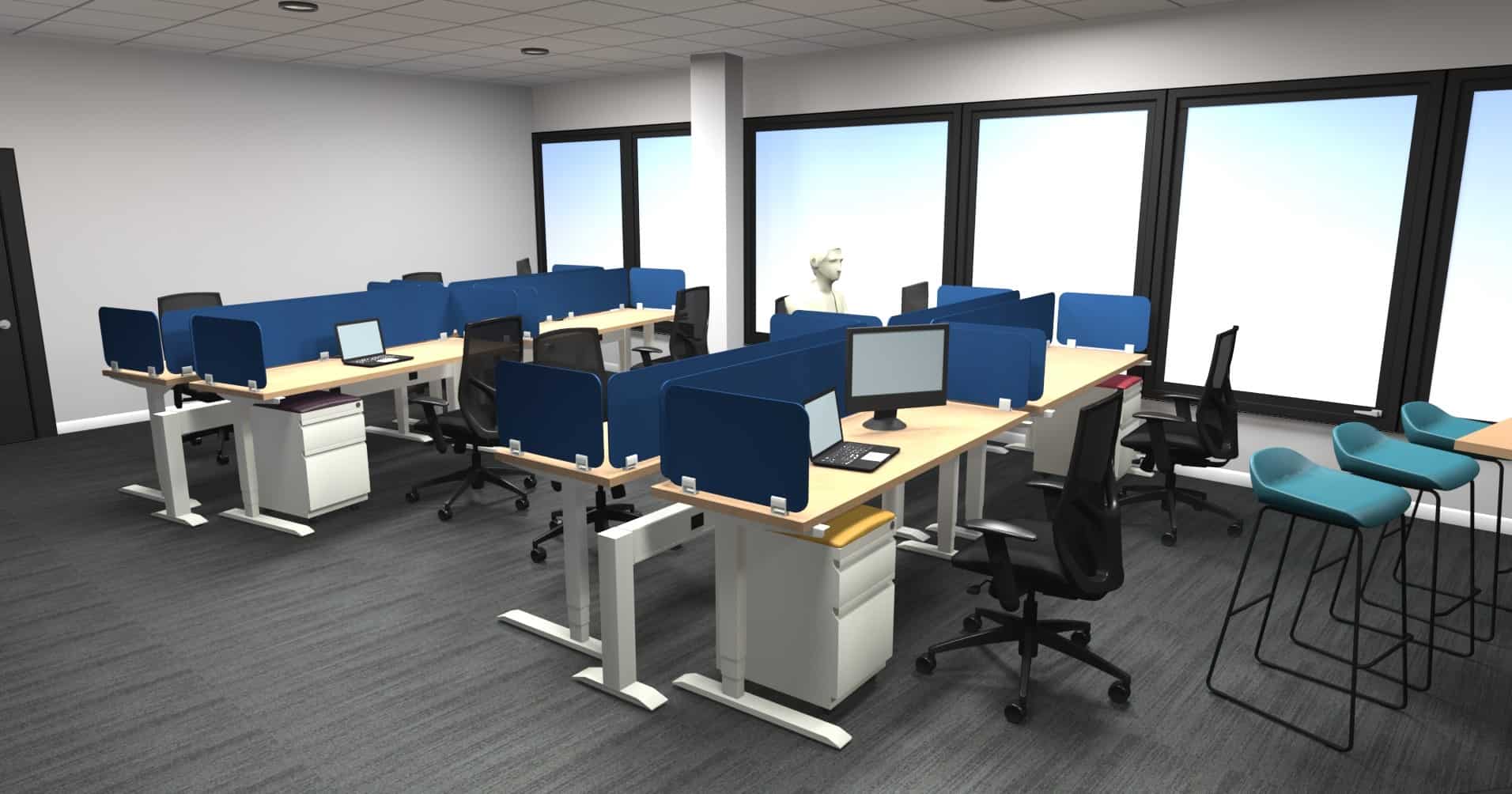
What are the cons of a standing desk?
Standing for too long, just like sitting for too long, is not good for you. It can lead to joint and back pain, swelling, and fatigue. Standing all day can aggravate bad posture if you don’t take breaks to sit and if your ergonomic alignment is not correct.
How to Use a Height-Adjustable Desk Properly
Don’t stand for too long
Your goal should be to find the right balance between standing and sitting to avoid doing either for lengthy stints. Alternating between sitting and standing positions, with some breaks from both to walk around and stretch, you are more likely to avoid the negative impacts associated with both sitting for too long and standing for too long.
How long should you stand at a standing desk?
According to a 2012 study, the ideal schedule is to spend one hour standing for every one to two hours of sitting.

Optimize your ergonomics for correct posture
The key to avoiding injury and maximizing comfort standing at a desk is similar to cautions about sitting: pay attention to ergonomics. Based on your height, align the height of your desk as well as the position of your screen, mouse, and keyboard, to ensure that you are practicing good posture. For this reason, working directly on a laptop is not recommended, as it limits your ability to have your screen and keyboard in the optimal positions. With an external monitor, you can arrange your workstation more favorably.
Here are some general ergonomic rules-of-thumb. Keep in mind that everyone is different, so you may need to adjust slightly to suit your unique body type.
Desk height
Aim to have the height of your desk (the height of your keyboard and mouse) at roughly elbow height or just below when your arms are resting by your side. This height allows for proper arm positioning that avoids strain and discomfort when your elbow is at a 90° angle with your hands on your mouse and keyboard.
Screen height
Your screen should be positioned so that the middle of the screen is roughly at eye height. If your screen is too low, you will likely be looking down, which throws off your posture and creates neck and/or back issues.
Keyboard and mouse position
To allow your arms to rest by your side, position your mouse and keyboard where your hands will rest at them without having to reach or move your elbows forward or backward causing your arms to be out of parallel alignment with your body. Note that this likely means moving these items a bit compared to sitting position as you won’t have chair armrests when standing (see below illustration).
Stand softly to avoid soreness
All of this extra time standing can lead to achy body parts, especially if you are standing on a hard floor. To help cushion the impact on your bones, joints, and muscles, stand on something softer and more supportive than a firm floor. Anti-fatigue mats can make standing time less uncomfortable.
Footwear is another important consideration. Opt for supportive and comfortable shoes that lessen the impact of standing.
Standing Desk Sizes
Height-adjustable office desks most often range in table size from 24″x48″ to 30″x72″. Desk heights typically range from 28” to 48” high.
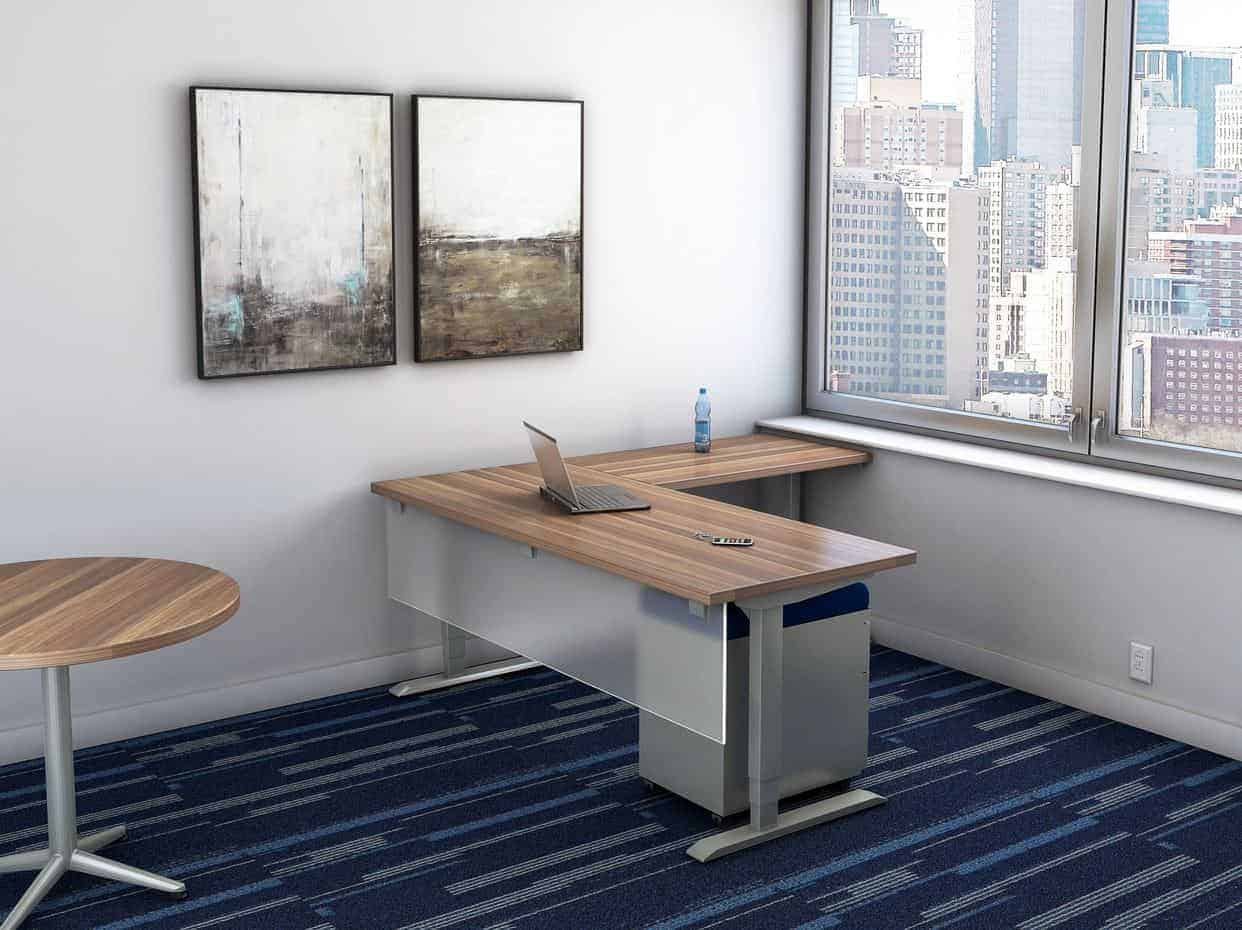
Types of Height-Adjustable Bases
There are a number of different height-adjustable bases available. Most come with a keypad that is programmable with memory for 3-4 customized heights. Some come with a reminder function to help you stay on track with your standing goals.
Single Base
A single height-adjustable base is a perfect solution for any office with a small footprint. It can be used in a small area or in the corner of a room. A height-adjustable base can also be used with a round, square, or curved corner worksurface.
2-stage Straight Base
The 2-stage straight height-adjustable base option is available with either a T-leg or a C-leg base. It can accommodate a straight worksurface from 24”-36” deep by 42”-84” wide. Base height ranges from 27.2” to 46.5”.
3-stage Straight Base
The 3-stage straight height-adjustable base is the same as the 2-stage straight height-adjustable base, except that its height has a wider range, from 23.6” to 49.2”
90-degree 3-stage Base
This type of height-adjustable base is used for a large workstation with an L-shape worksurface. The entire worksurface goes up at the same time.
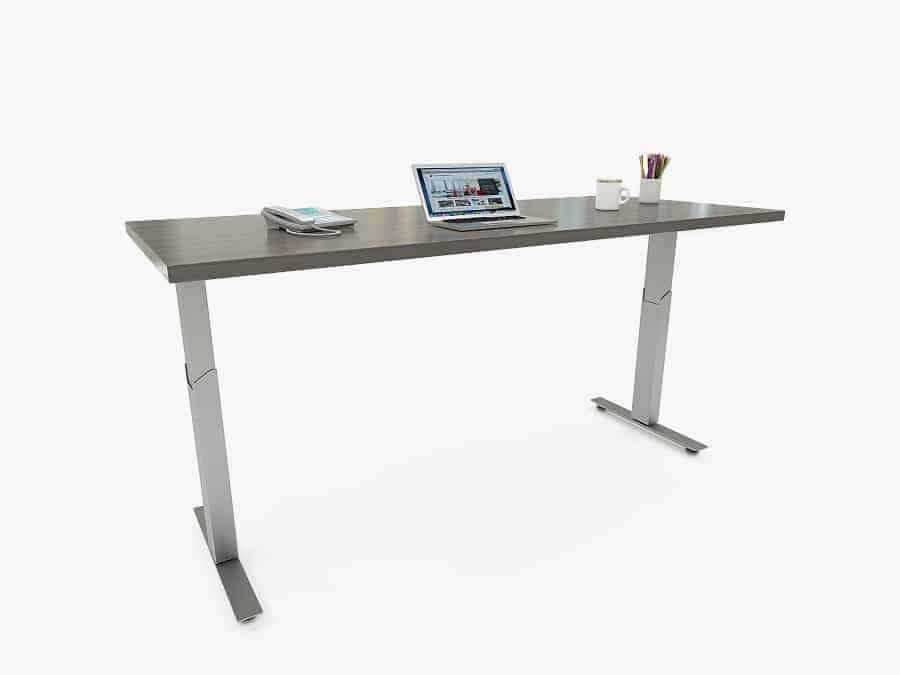

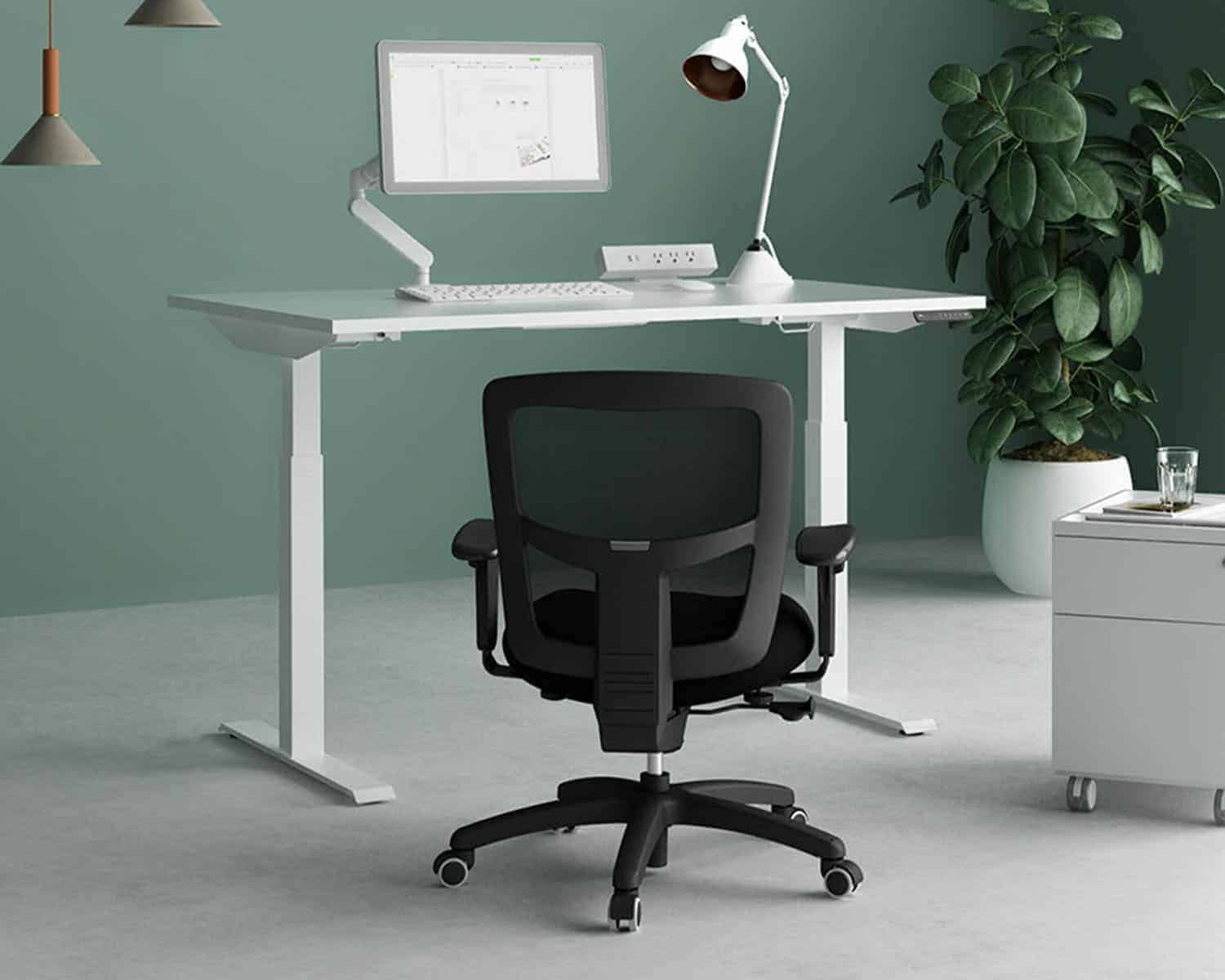
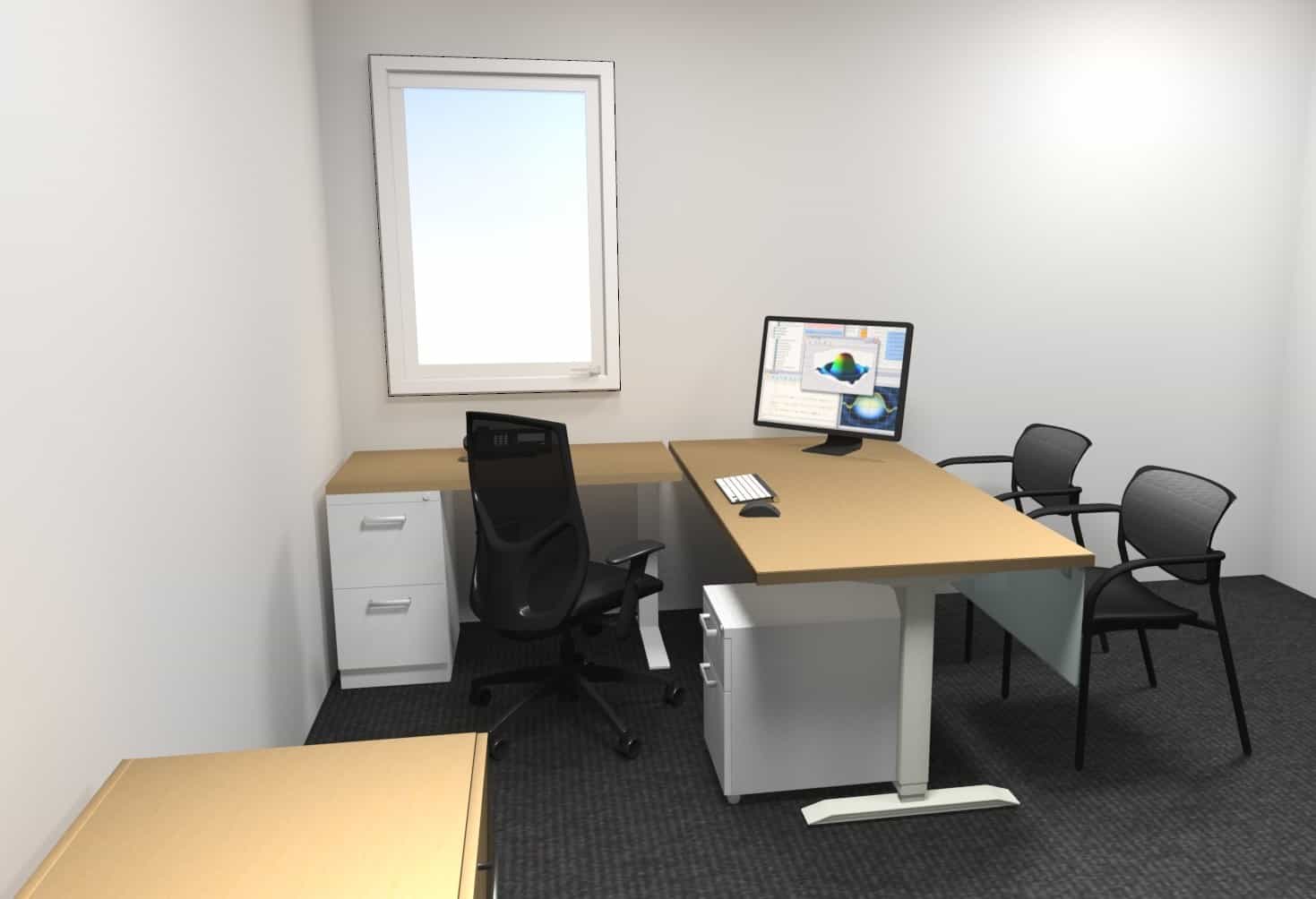
Are Standing Desks Right for Your Office?
It is almost certain that at least some of your employees could benefit from standing desks. The question is, what kind of standing desk is right for your workplace?
Standing desks come in a variety of designs, from single-user desks to multi-person work tables. What particular product you choose will depend on your individual needs. You can view our full range of adjustable-height desks above.
How to Incorporate Standing Desks into Your Office Design
Bringing height-adjustable tables into your office design and layout requires careful planning. How many do you need? Where should they be placed? Here are factors to consider:
Quantity
You could outfit each of your employees with a height-adjustable workspace, but, for most companies, this is neither cost-effective nor necessary. Think about how many of your employees will take advantage of a standing desk and for how long in order to calculate the most efficient use of a single unit.
Placement
Ensure that standing desks are placed in areas where employees cannot look over colleagues’ shoulders; avoid placing standing desks where employees are standing face-to-face.
Arrangement
Do you require personalized desks for individual employees? Or would it be more appropriate to have an area of the office set aside for standing desk space? In the second case, rearrange the office carefully so that the standing desk space does not impact the existing floor plan. Remember to consider IT integration.

How A Furniture Dealer Can Help
Given these many considerations noted, you may find it helpful to work with a furniture dealer to adad standing desks to your office. An experienced furniture dealer will consult with you to determine just how many standing or height-adjustable desks you need and can help you integrate the desks into your office with minimal disruption to your existing plan. Moreover, your furniture dealer can handle all of the logistics of the process, from selection to delivery to installation and IT functionality. Don’t go it alone—your furniture dealer can help!

